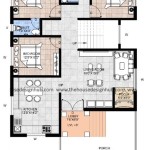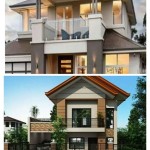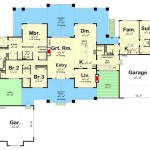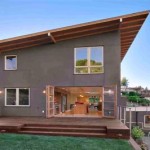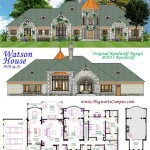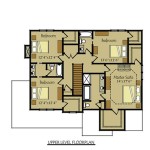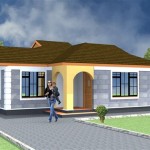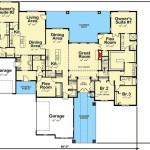```html
A-Frame House Plans with Basement: Maximizing Space and Functionality
The A-frame house, characterized by its steeply angled roof that forms the shape of the letter "A," has a long and fascinating history. While its modern resurgence began in the mid-20th century as a vacation home trend, the A-frame's simple design and efficient use of materials have made it an appealing option for various housing needs. Integrating a basement into an A-frame structure adds a significant dimension, effectively expanding the livable space and enhancing the functionality of the dwelling.
The appeal of the A-frame design lies not only in its distinctive aesthetic but also in its construction efficiency. The triangular shape provides inherent structural stability, often requiring fewer internal supporting walls. This can lead to reduced material costs and faster construction times. Furthermore, the steeply sloped roof is exceptionally effective at shedding snow and rain, making it suitable for climates with heavy precipitation. However, the inherent design of an A-frame, where the walls also serve as the roof, can limit usable space on the upper floors due to the sloping angles.
Adding a basement to an A-frame house plan directly addresses this spatial limitation. By excavating and creating a subterranean level, homeowners can significantly increase the square footage of their living space. This basement can then be adapted for a variety of uses, from bedrooms and bathrooms to recreational areas and storage. The integration of a basement also provides practical benefits, such as protection from extreme weather and a more stable foundation for the overall structure.
The decision to incorporate a basement into an A-frame house plan requires careful consideration of several factors, including soil conditions, local building codes, and budget constraints. Proper planning and design are crucial to ensure the structural integrity of the house and the functionality of the basement. This article will explore the key considerations and benefits associated with A-frame house plans featuring basements.
Optimizing Space: The Primary Advantage of Basements in A-Frames
The most compelling reason to include a basement in an A-frame house plan is the substantial increase in living space. The inherent challenge with A-frame designs is the limited headroom and usable wall space on the upper floors due to the sloping roof. The higher up one goes, the less usable space one has. A basement effectively overcomes this limitation by providing a full-height, rectangular space that can be configured in various ways. This additional space can serve as bedrooms, offering much-needed privacy and quiet away from the main living areas. Alternatively, it can be transformed into a recreation room, home theater, or home office, providing dedicated spaces for leisure and work.
Beyond living areas, basements are invaluable for storage. A-frame homes, with their inherent spatial constraints, often lack sufficient storage space for seasonal items, tools, and other household belongings. A basement offers ample room to store these items, keeping the main living areas clutter-free. The basement can also house essential mechanical systems, such as the furnace, water heater, and electrical panel, freeing up space on the upper floors.
The increased value of a home with a basement is another significant benefit. A finished basement adds considerable square footage to the property’s assessed value, making it a worthwhile investment. While the initial cost of excavation and construction may be significant, the long-term return on investment is typically favorable, especially in areas where land is scarce or property values are high. A well-designed and finished basement can significantly enhance the marketability of the home should the owner decide to sell in the future.
Essential Planning Considerations for A-Frame Basements
Constructing a basement beneath an A-frame house requires careful planning and attention to detail. Unlike a traditional rectangular home, the A-frame's unique shape and structural characteristics necessitate a tailored approach to basement design and construction. Soil conditions are a primary consideration. A geotechnical survey is essential to determine the soil's composition, stability, and drainage properties. This information will inform the design of the foundation and ensure its ability to withstand the weight of the house and resist water infiltration. Expansive soils, which can swell and shrink with changes in moisture content, pose a particular challenge and may require special foundation designs, such as deep foundations or soil stabilization techniques.
Drainage is another critical factor. Proper drainage is essential to prevent water from accumulating around the foundation and seeping into the basement. This can be achieved through a combination of strategies, including grading the surrounding land to direct water away from the house, installing a perimeter drain system to collect and divert groundwater, and applying a waterproof coating to the exterior of the foundation walls. The type of drainage system will depend on the soil conditions and the local water table level. Local building codes typically specify the required drainage measures for basements to ensure their dryness and prevent structural damage.
Structural integrity is paramount. The basement foundation must be designed to support the weight of the A-frame structure, as well as the surrounding soil. This requires careful engineering calculations to determine the appropriate foundation wall thickness, reinforcement, and footing size. The A-frame's unique roof structure, which exerts significant lateral forces on the foundation, must also be taken into account. A structural engineer can provide expert guidance on the design of the foundation to ensure its stability and prevent cracking or settling. The integration of the A-frame's structural elements with the basement foundation is crucial for the overall stability of the house.
Design and Functionality: Maximizing the Potential of A-Frame Basements
The design of an A-frame basement should prioritize functionality and create a comfortable and usable living space. Natural light is often limited in basements, so incorporating ample artificial lighting is essential. Recessed lighting, task lighting, and accent lighting can be used to create a bright and inviting atmosphere. Consider using light-colored paint and finishes to maximize the reflection of light and make the space feel larger.
Ventilation is crucial for maintaining air quality and preventing moisture buildup in the basement. Proper ventilation can be achieved through a combination of natural and mechanical methods. Installing windows or window wells can provide natural light and ventilation. A dehumidifier can help to remove excess moisture from the air. Ensure adequate air circulation by using fans or a forced-air ventilation system. A well-ventilated basement is less likely to develop mold or mildew, creating a healthier and more comfortable living environment.
Accessibility is another important consideration. The location and design of the basement entrance should be carefully planned to ensure easy access from both inside and outside the house. An interior staircase provides convenient access from the main living areas. An exterior entrance, such as a walkout basement, can provide direct access to the yard and is particularly useful for basements used as recreational areas or workshops. A well-designed entrance should be both functional and aesthetically pleasing, integrating seamlessly with the overall design of the house.
Finishing the basement requires careful selection of materials that are moisture-resistant and durable. Concrete floors can be sealed and stained or covered with durable flooring materials such as tile, laminate, or engineered wood. Walls can be framed and insulated to provide thermal comfort and reduce noise transmission. Moisture-resistant drywall or paneling should be used to prevent moisture damage. Choosing materials that are easy to clean and maintain will help to keep the basement looking its best for years to come. Thoughtful design and careful material selection can transform a dark and damp basement into a bright, comfortable, and functional living space that enhances the value and enjoyment of the A-frame home.
```
A Frame Cabin Plan Boulder Mountain

A Frame House Plan With Walk Out Basement Plans

Untitled A Frame House Plans Cabin

Plan 80945 A Frame House With Walk Out Basement

A Frame House Plans W

Plan 80519 Contemporary House With Walk Out Basement

A Frame Cabin Plan Boulder Mountain

Cozy A Frame House Plans Blog Eplans Com

A Frame House Plans Floor Cool

Amazing A Frame House Plans Houseplans Blog Com

